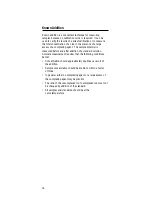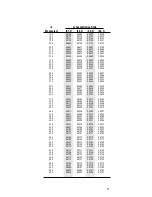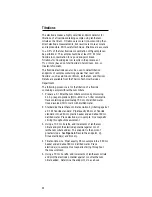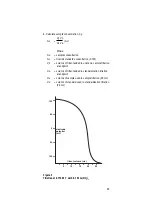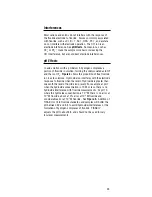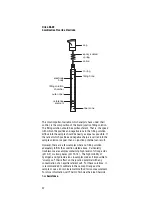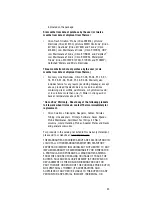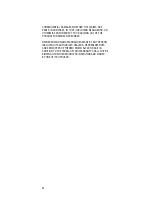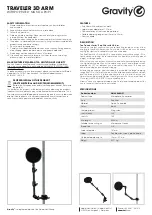
Troubleshooting Guide
The most important principle in troubleshooting is to isolate the
components of the system and check each in turn. The
components of the system are: 1) Meter, 2) Electrodes,
3) Standard, 4) Sample, and 5) Technique.
Meter
The meter is the easiest component to eliminate as a possible
cause of error. Orion meters are provided with an instrument
checkout procedure in the instruction manual and a shorting
strap for convenience in troubleshooting. Consult the manual
for complete instructions and verify that the instrument operates
as indicated and is stable in all steps.
Electrodes
1. Rinse electrodes thoroughly with distilled water.
2. Check electrode operation (slope).
3. If electrode fails this procedure, see
Measuring Hints.
4. Repeat step 2,
Checking Electrode Operation, (Slope).
5. It the electrodes still do not perform as described, determine
whether the fluoride or reference electrode is at fault. To do
this, substitute a known working electrode for the electrode
in question and repeat slope check.
6. If the stability and slope check out properly, but
measurement problems persist, the sample may contain
interferences or complexing agents, or the technique may be
in error. See
Standard, Sample,
and
Technique
sections.
7. Before replacing a “faulty” electrode, or if another electrode
is not available for test purposes, review the instruction
manual and be sure to:
• Clean the electrodes thoroughly
• Prepare the electrodes properly
• Use proper filling solutions, TISAB, and standards
• Measure correctly
• Review
Troubleshooting Checklist
30
Summary of Contents for 96-09
Page 7: ...4 ...

